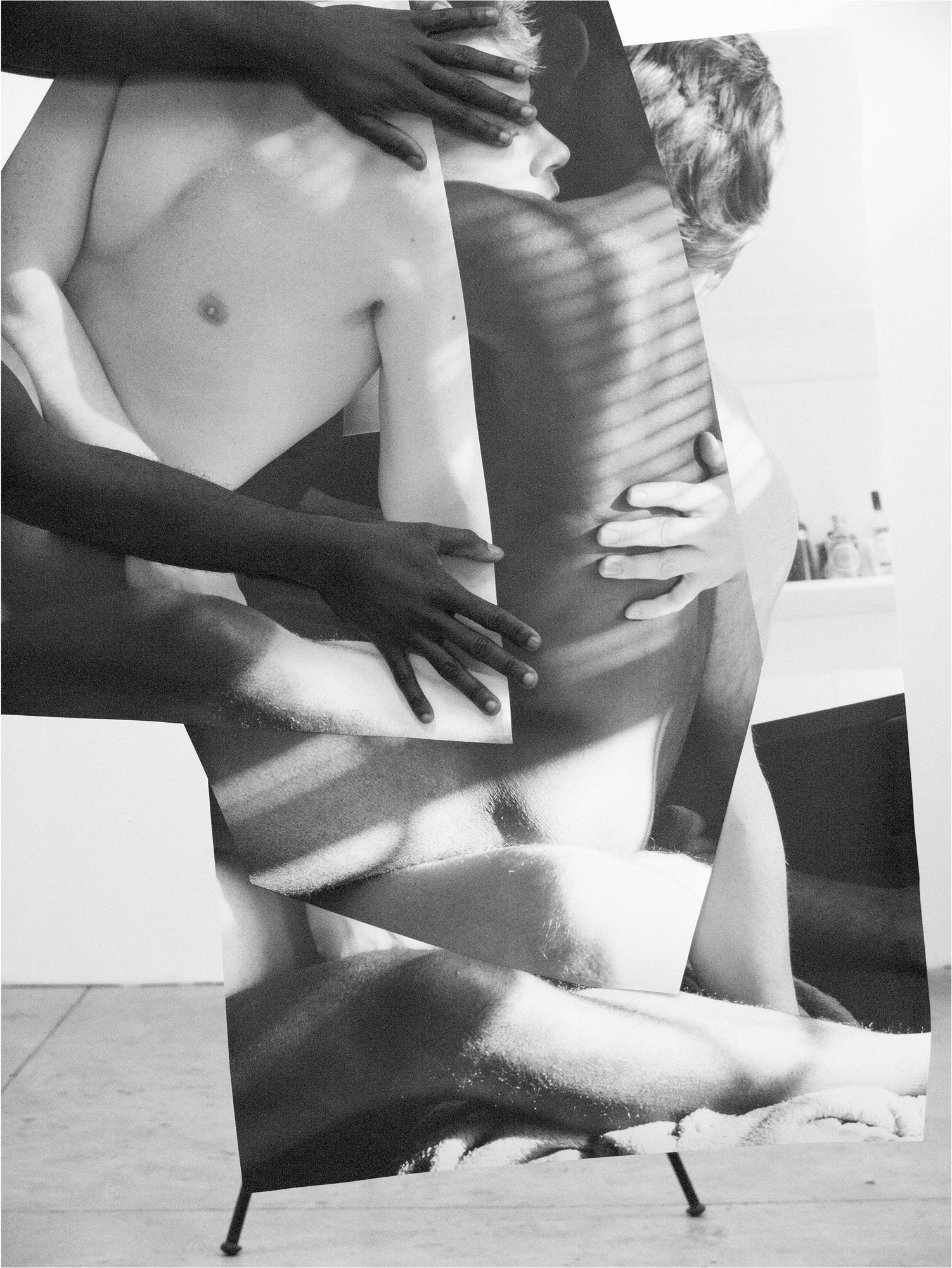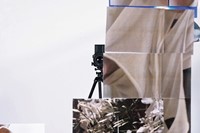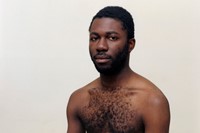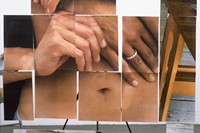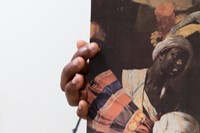This article is published as part of our #CultureIsNotCancelled campaign:
American photographer Paul Mpagi Sepuya’s work has appeared steadily in group and solo exhibitions over the last decade, from the Guggenheim, New York and the Contemporary Art Museum, St. Louis to London’s Barbican and Vielmetter in Los Angeles. His most recent solo show at the latter institution, entitled A conversation about around pictures, was due to run until April 25, but, in what has become the norm for so many events and exhibitions, was interrupted when Los Angeles went into lockdown.
A recent book, co-published by Aperture and the Contemporary Art Museum, St. Louis, details a decade of Sepuya’s photography, and how his idiosyncratic practice – at its core a queer, black gaze, examined through layers and surfaces within his studio-shot images – has evolved. In Sepuya’s images, the viewer meets an intimacy that is at once confronting and distanced: naked figures are partially obscured by cameras, reflected in mirrors, hidden behind curtains or seen through other screens. He uses mirrors to capture himself alongside friends and lovers, their smudged and dusty surfaces signalling the people who have been photographed before.
Sepuya’s is a sensibility that Grace Wales Bonner describes being “blown away by”. The London-based designer – who has helmed her eponymous mens- and womenswear label Wales Bonner since 2014 – discovered Sepuya’s work in a New York exhibition, and invited him to create imagery for her guest-edit of AnOther Magazine A/W17’s Document, marking their first collaboration. Wales Bonner’s research-driven work mines a history of black artists, writers, musicians, and image-makers and incorporates their legacies into her own elegant aesthetic; her A/W20 collection, shown in January, looked to Lovers Rock, the British Afro-Caribbean music scene dating back to 1970s London. Sepuya and Wales Bonner have an interest in this lineage in common, and each has a deep respect for the other’s work. From isolation on opposite sides of the world – Sepuya at home in Los Angeles, Wales Bonner in the English countryside – the two friends shared a conversation.
Belle Hutton: How did you first meet?
Grace Wales Bonner: I saw your show in New York and I emailed after that show, and you were very eloquent and sweet. I remember being so blown away by what a refined world yours was. I think that maybe at the time you were in two shows in New York.
Paul Mpagi Sepuya: They were across the street from each other – I was in a show with Deana Lawson and Judy Linn at Sikkema Jenkins & Co. When you emailed, I had already started seeing your work around, maybe the season before. And then the opportunity came through AnOther to do a portfolio, and you reached out and asked if we could do some sort of exchange with the mirror work. That’s how it started.
GWB: Exactly. That was the first collaboration we did, I think that was for my A/W17 collection. I sent you some of my research, a selection of books that were inspirations, and asked you to respond to it.
PMS: It was a really fun challenge and got me out of my comfort zone. You took snapshots with your phone and emailed them for me to print out. I ended up with a stack of your research and images and PDFs in my studio, but I didn’t know what to do with them at first. I spent a lot of time printing things out and cutting them out and arranging them, stepping back and looking. And then one day it kind of clicked – I think I made all of the images in about three days, after maybe a month of you sending images and me just living with them.
GWB: I remember you saying you really enjoyed having the time to just play around. For me, that was really unearthing a part of my brain as well, and my process. It was an interesting way to have an open and honest dialogue because the reference points were something that meant so much to me. It was quite special to be able to share that with you.
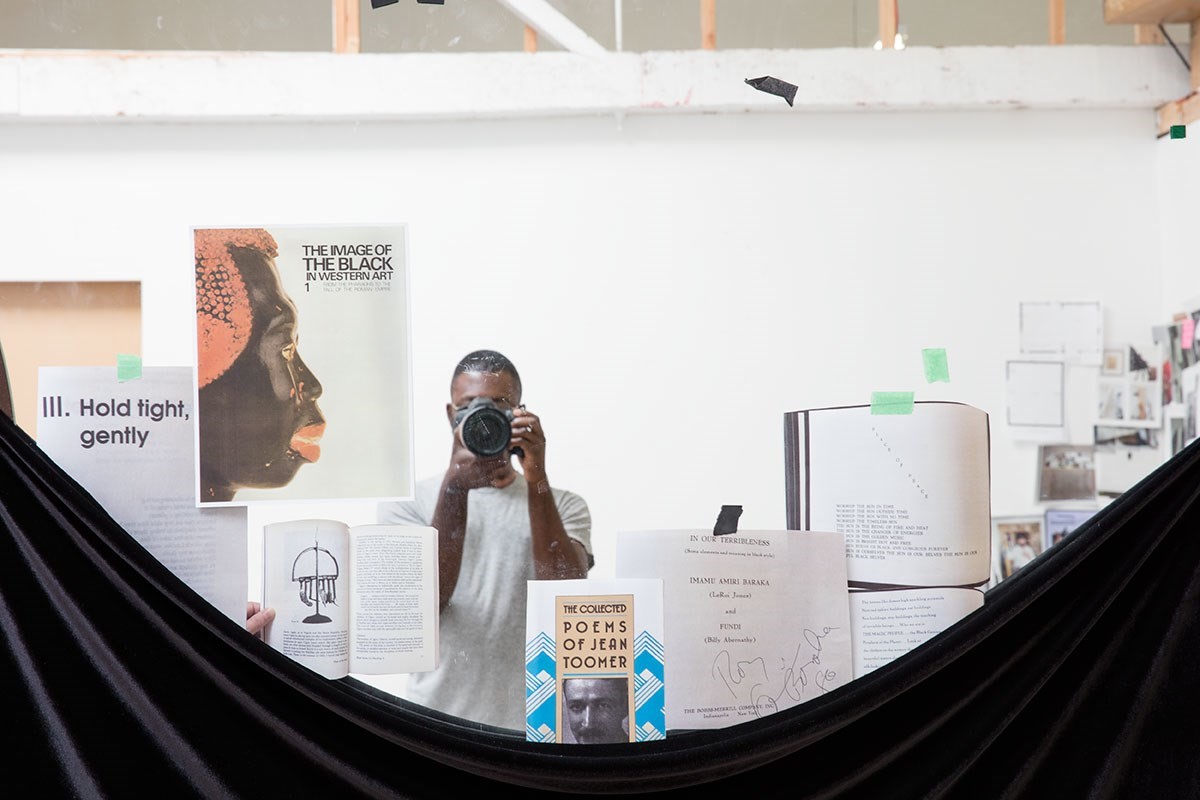
BH: Grace, you brought some of Paul’s work into your exhibition at the Serpentine, A Time for New Dreams. How did that come about?
GWB: It felt natural to work with Paul for the exhibition. I was thinking about this idea of portals, and being transported into other spaces – the mirror as a portal. The exhibition was an attempt to extend this idea of a brotherhood or lineage across different times and places, placing people in relationship with each other. I remember Rotimi Fani-Kayode’s work was in that exhibition, that was also a point of connection because you had that book in your studio that I find really inspiring, Black Male/White Male. Rotimi was part of a community in Britain around the 80s, with Homi K. Bhabha and people like that, and their legacy is what I grew up around.
PMS: One of the reasons I was interested in Rotimi Fani-Kayode is that he, for whatever reason, was mostly written out of history. I feel like in order for someone like Mapplethorpe to have had this mythology around him, a lot of other people had to be suppressed. There’s a lot of histories like that. I think about that with an author from the 1920s and 30s that I really like, Richard Bruce Nugent. At moments where there’s an interest in the development of thinking and intersectionality, we have to talk about why these figures were suppressed in order for us to make sense of them now. I’ve been thinking a lot about the huge shadow that Mapplethorpe cast over black images, so I’m really interested in someone like Rotimi Fani-Kayode, who was responding to him contemporaneously. I was making images that I realised were responding, even if I didn’t realise, to his work – the series White Feet particularly.
BH: Your work and Rotimi Fani-Kayode’s work are in the Barbican’s Masculinities exhibition. How does that feel to have your work featured alongside his?
PMS: Oh, it’s wonderful. To actually be in conversation through exhibitions is amazing. It’s the same way I feel about being in conversation through collaborations with Grace – there are places where different mediums meet conceptually, through research and inspiration. We’re both dealing with the body and how the body carries history and performs and negotiates itself.
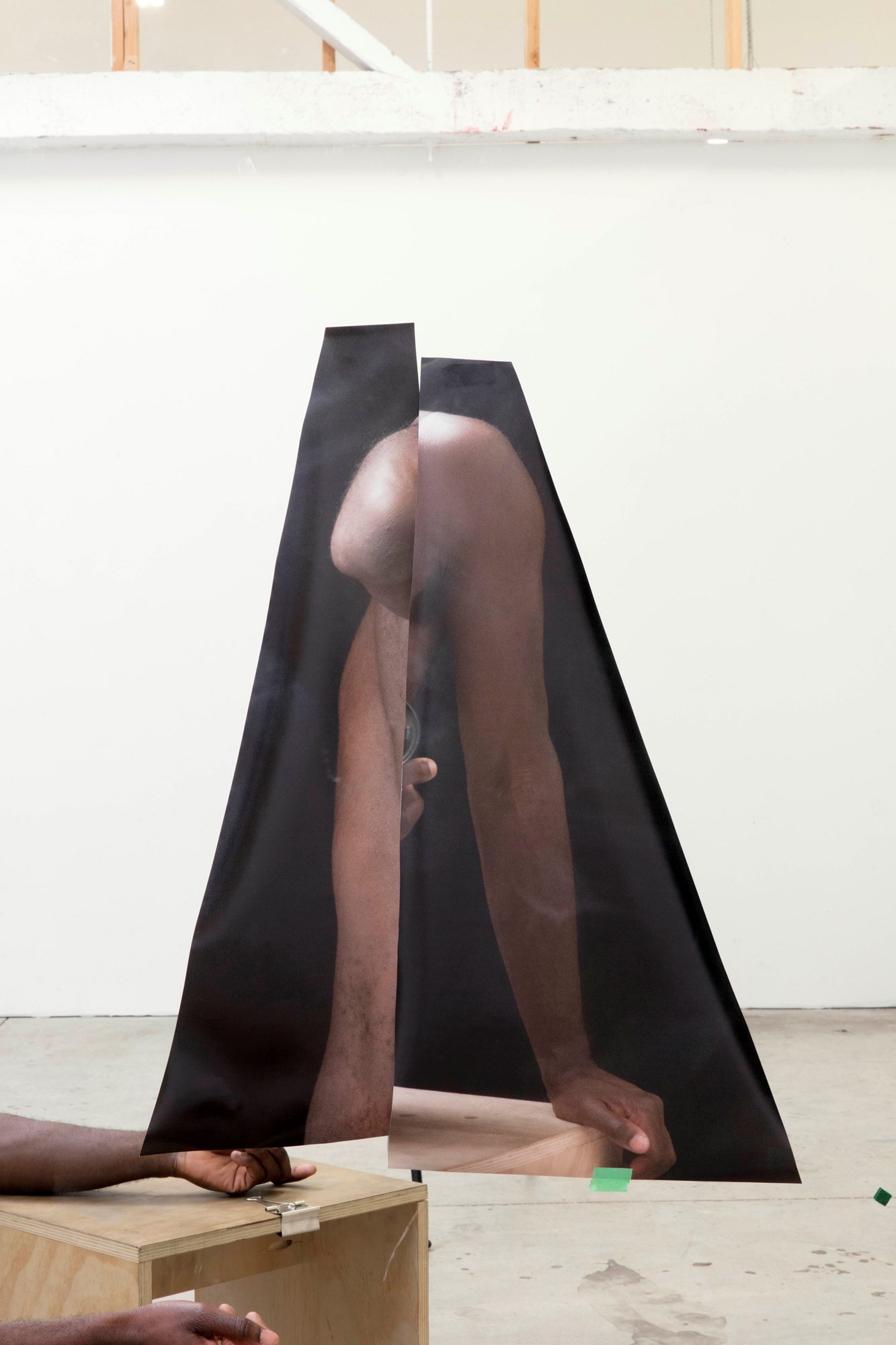
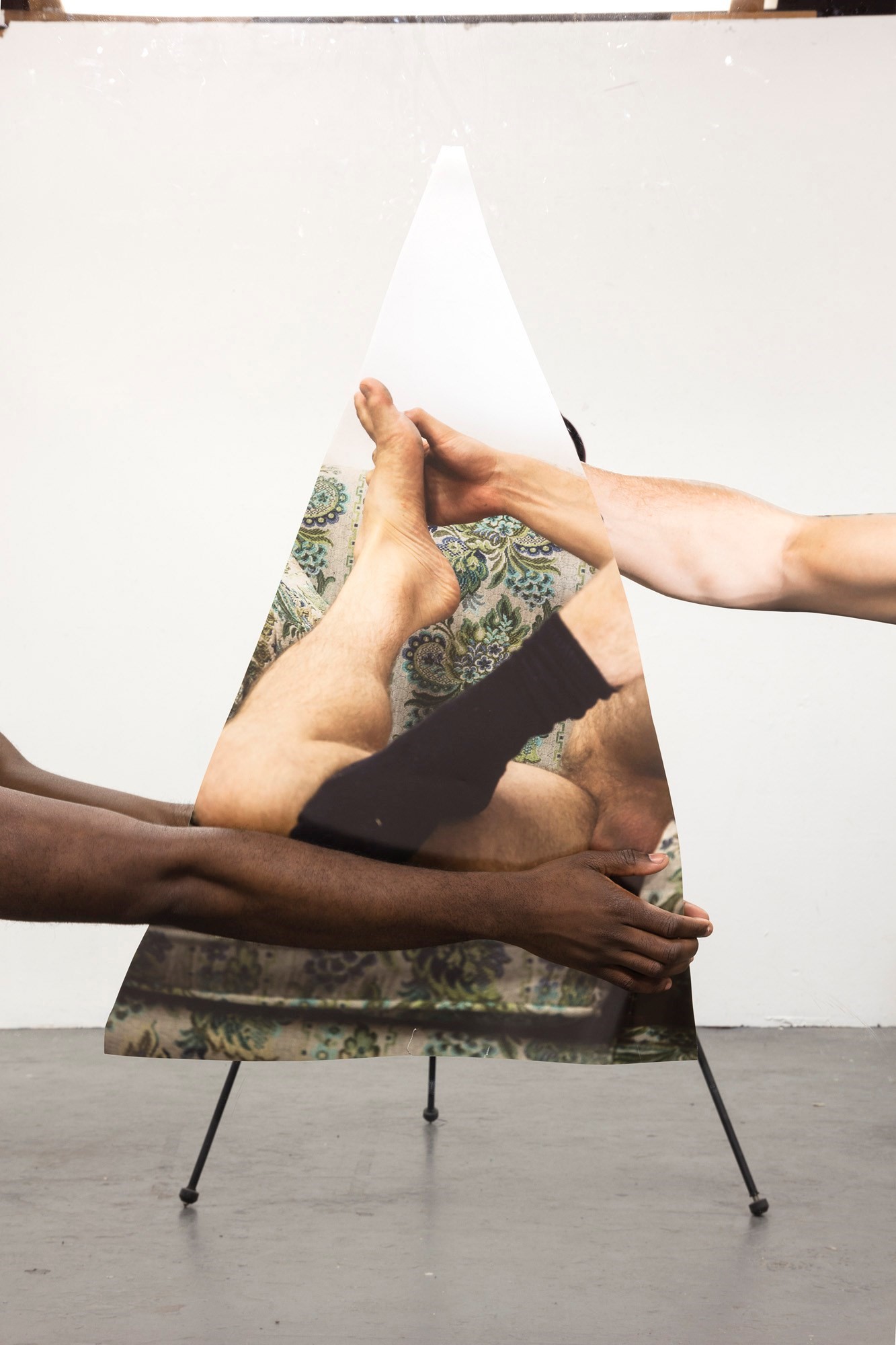
BH: You’ve just had a couple of solo exhibitions, and Grace, you wrote an essay about Paul’s studio for the accompanying book. What is the story behind that?
GWB: What I talk about in the essay is coming to Paul’s studio maybe a year after we’d met. I’d seen so many images and to actually be in the space and witness the process was quite incredible because it felt so familiar. There was something quite magical about that first encounter, seeing the mirror with the fingertips and the dust. I was very interested in how precise and meticulous you seem to be in the way you arrange things, and being very respectful of history. I felt there was something quite rhythmical about the way that you work. That whole process was quite like a beautiful dance, and to get to see it – the art of that, the performance of it – was really inspiring for me. In my own work I’m often thinking about this very refined, sophisticated image of blackness. I’m always looking to reveal these examples in history and these places where that does exist, and it was really beautiful to see how Paul reinforces the images I have of beauty.
PMS: I always wonder how that studio experience is for people. What is your studio like?
GWB: I don’t think it’s as inspiring as yours. I have lots of books, my library is the thing I’m most passionate about. I have a lot of research boards, collection overviews. I have two different studio spaces. One is more like a thinking, research space and the other is more of a shared studio. I feel like I create in lots of different places.
PMS: In January you were saying it was time to really focus on putting the solid foundations down for the business. Like you’ve figured out the language, the vision and now it’s how to keep it going. And then suddenly all of this has happened.
GWB: From about June last year, I made a decision to really focus on building the infrastructure at Wales Bonner. I’m really grateful that I had that time to really think about that – it’s put me in OK stead to come into a time like this, and now it’s even more important to reinforce my values. You know, to be creating things in a way that makes sense.
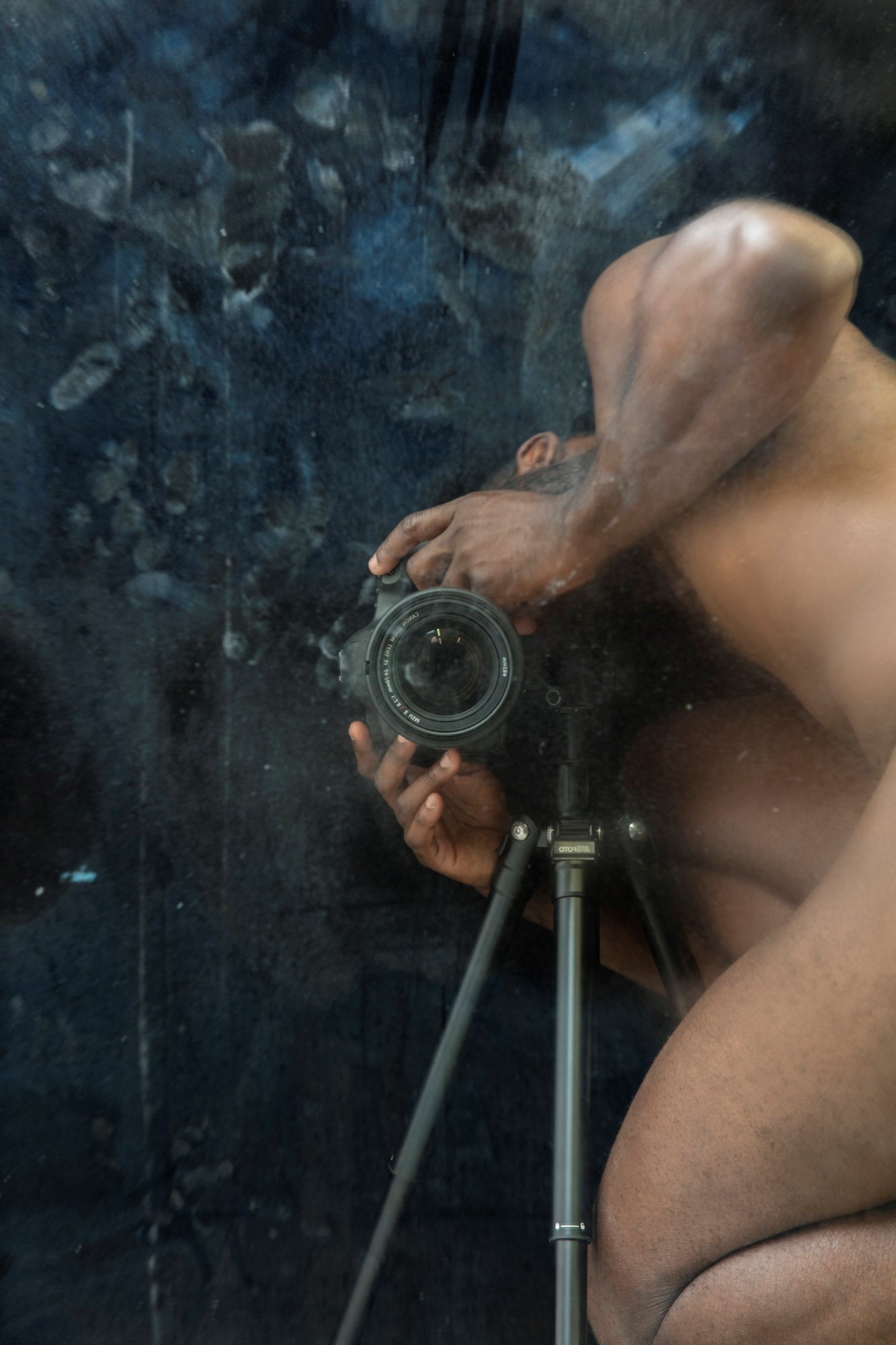
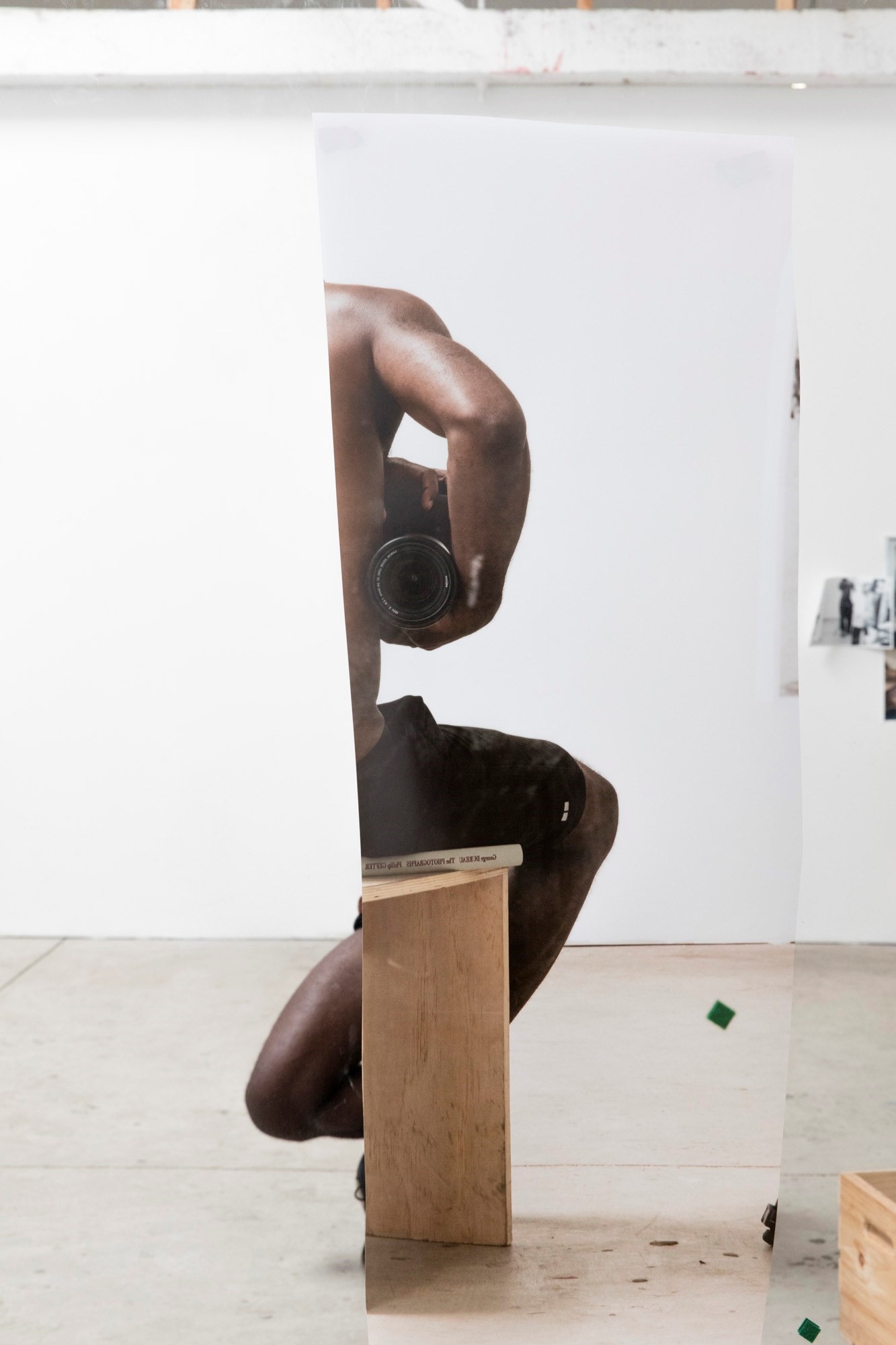
BH: How are you both coping with not being able to go to your places of work?
PMS: I’m working from home, but mostly doing admin and organising. I brought some of my cameras home. I can’t do the type of work that I was doing in my studio and I wouldn’t want to try to recreate it. I think at some point, once I get the hang of things, I’ll start making something – something manageable, something domestic.
GWB: It’s made me realise how many things I was doing that are very energy consuming, that actually when you have to slow things down, you’re completely fine not to do them. I’ve had space to think, plan, organise, and that’s been really energising.
PMS: When it gets to the point where you have to have fittings and things like that, how does that work?
GWB: I had my first online fitting last week, it was quite odd. I was at the stage when lockdown happened that I’d designed the whole collection. Quite a lot of the work was done, but there’s a lot of things you can’t do online. Like looking at fabrics and touching them and seeing things on the body. I’m going to get to that stage, but at the moment, a lot of the factories I work with in Italy are closed, so it’s just on hold until they’re open. It also reduces the amount of excess though. If you have to look at what is essential, there can be more refinement in what’s being done. That’s how I’m approaching things right now.
BH: What have you both been doing with your time during isolation?
PMS: I have a stack of things that I’d like to read, that I haven’t found time to pick up yet. I have a front and back yard, so I’ve been pulling a lot of weeds, there’s some little vegetables that are sprouting.
GWB: I’ve been trying to do a lot of meditation and yoga. I’ve been listening to a lot of music, and basically organising all my music, which has been so satisfying. Music informs a lot of my work – specific research for different collections. Lots of different things, Latin music, Indian music, Arabic music, Gospel – I’ve been loving that, it’s been really wonderful.
PMS: I would love a playlist, I want to know what you’re listening to. After your last collection, I was like, I’m gonna listen to all the Lovers Rock stuff. I have been trying to do yoga everyday as well and other things to keep focused, keep moving.
GWB: Great that you’ve got a garden Paul, and you can be out there. That feels like the most important thing. I got really into picking daffodils this weekend too, being very particular about exactly which ones I was picking.
PMS: We don’t have daffodils here, but we have lots of jasmine and lavender, things are blooming. Orange trees and lemon trees, it’s really nice.

BH: Paul, your recent exhibitions looked at a decade of your work. Do you enjoy the process of looking over your archive in that way? Is that something you do too, Grace?
PMS: My process always involves looking back – looking and re-looking and recombining material that can always be brought back into the studio and transformed. Every time I go into a show, I’m happy if I like it, but I’m also happy if I start to see things that I would do differently next time. It already gets me excited to think about the next thing. Grace, in the process of building up the business side, are you building an archive of your work?
GWB: I have an archive to some extent but I’m wanting to formalise it. I’ve tried to allow what I do to be quite accessible in terms of thought process and recording references going through each collection. I think even with the brand, I’m kind of trying to create a luxury brand that comes from that black cultural perspective, but it’s valuing what a heritage European luxury brand would value. So there’s an old-school kind of spirit about that, and that’s connected to a certain history.
PMS: I like that way of thinking. When I think of a heritage brand, it’s the same way I think about photography – they’re two things that are really saying that there’s going to be a future and carving out a space for it. Like, there will be those who come after and I’m sort of building this up for them. In all of the dimensions of this black diasporic space, that’s something that we’re always contending with – at so many points in history, the moment you start to build something, you have people saying, ‘oh no, we have to take it away’. So we take the things that are meaningful and important and make them in a way that says, yeah, this is going to last. There’s a future.
The book Paul Mpagi Sepuya is out now, co-published by Aperture and the Contemporary Art Museum St. Louis.
Paul Mpagi Sepuya’s solo exhibition, A conversation about around pictures, at Vielmetter, Los Angeles, was due to run until April 25, 2020. The gallery is open by appointment only.
